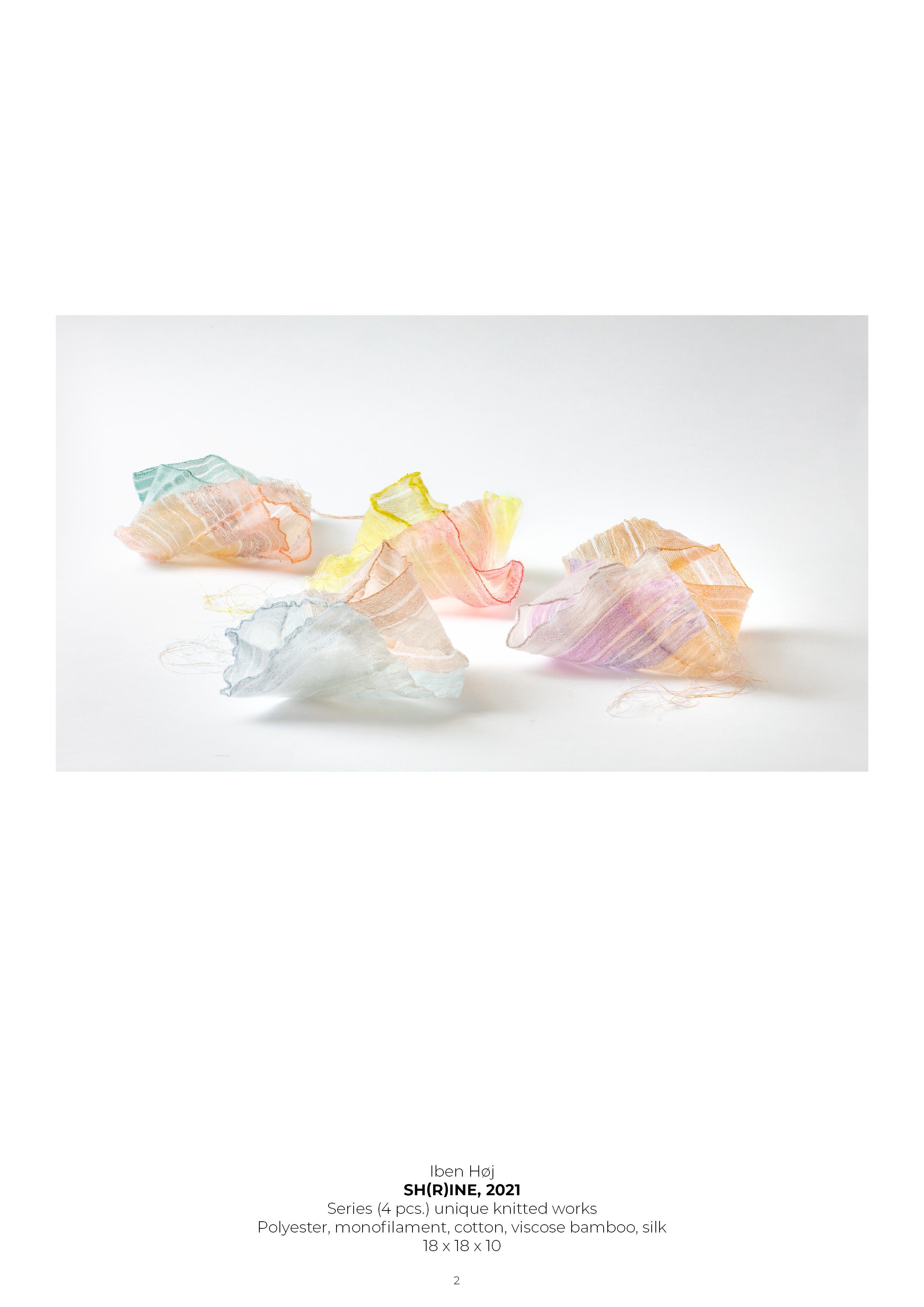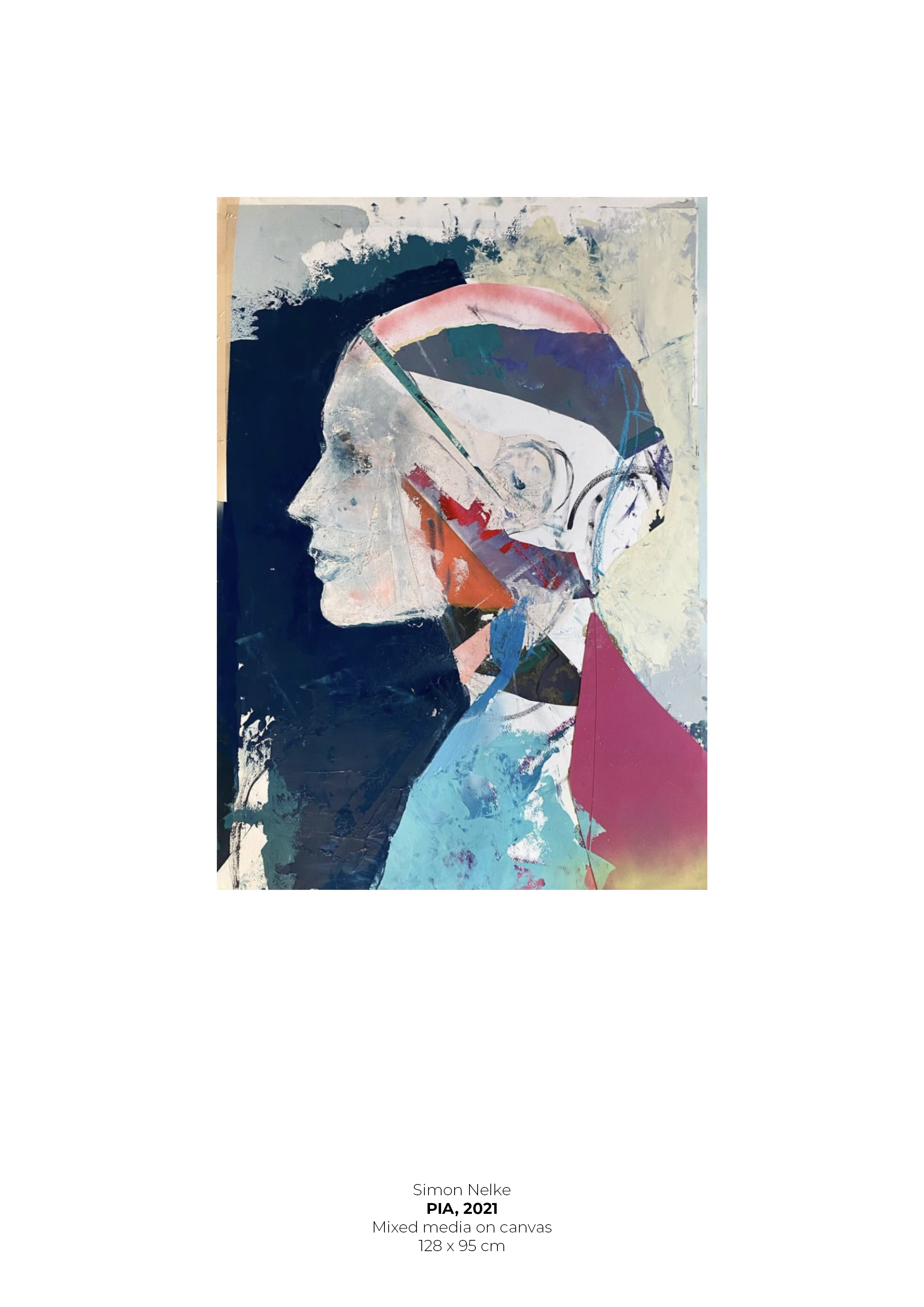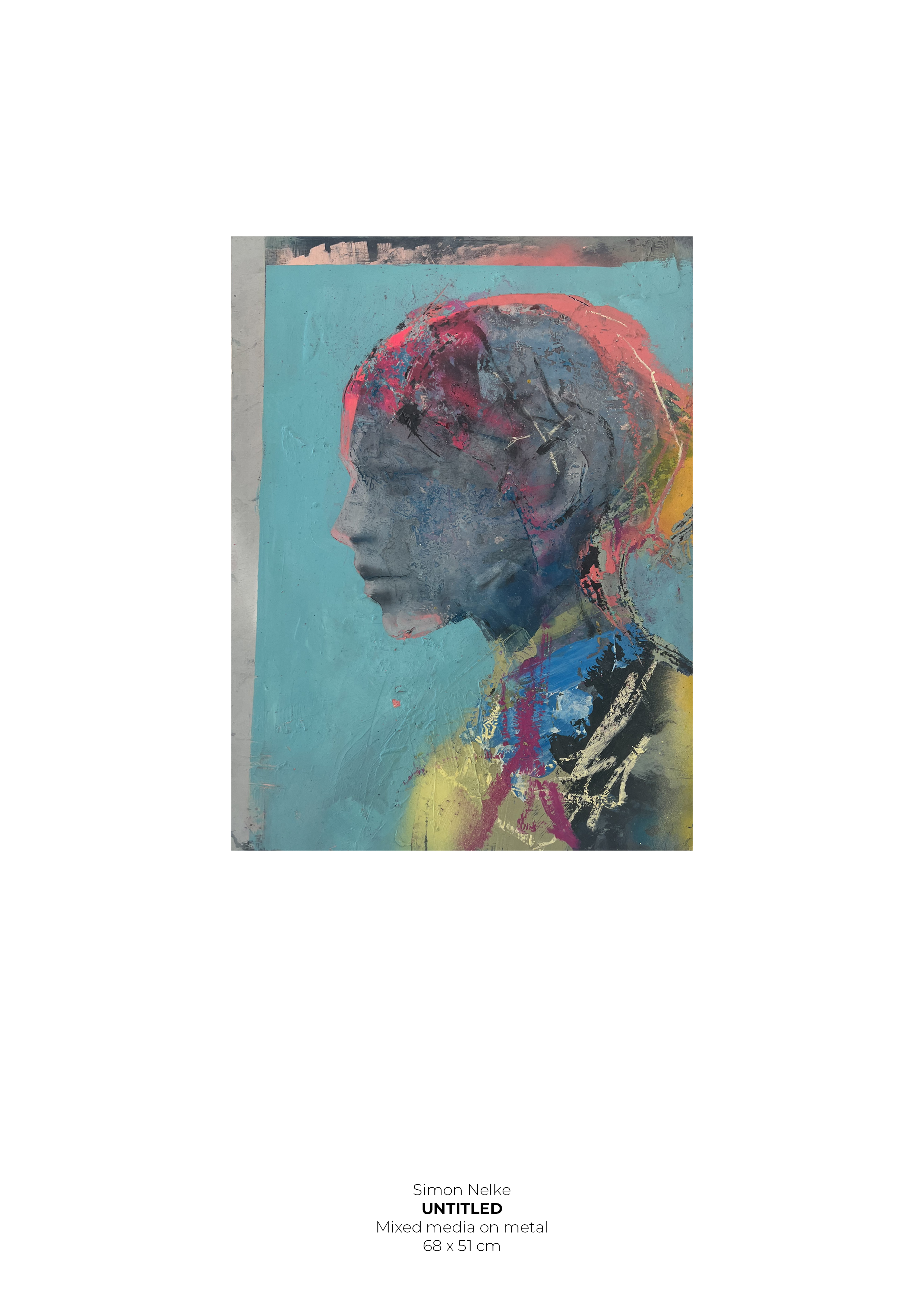DOUBLE EXHIBITION
SIMON NELKE & IBEN HØJ
3D UDSTILLING
04.03. - 25.03.23
-
From 2003 to 2014 I designed and produced knitwear. Now, I work mainly with knitted textiles, often in large-scale installations or spatial works that address such themes as fragility and strength, detail, and architecture.
I work alone on knitting machines. Gradually I construct a piece of knitting: sometimes out of one or two threads, sometimes out of as many as five threads of different qualities and colors. My work is all about ‘connecting’. In a literal sense, I use knitting machines and age-old textile techniques to connect very thin threads to create spatial works. Figuratively, a finished work connects with and is influenced by the surrounding space. My aim is to create a sensuous, spatial connection with the viewer. To that end, I seek a connection to a greater time: cohesion across history and between people.
I express my knowledge of traditional craftsmanship in an abstract idiom. I draw inspiration from nature. Waves lap over a sea urchin for thousands of years, until I find it as a reminder of the planet’s deep time. In the spring I collect leaf skeletons. The fine, brownish structures show the shapes of the previous year’s turgid leaves. They may look fragile at first, but often turn out to be the actual load-bearing structure. Delicacy gains strength through strong structures, and the delicate fibers of a thread can be connected with others to create very large installations.
I feel a profound sense of affinity with the evolution and traditions of textile craftsmanship. I collect old dresses, tablecloths, lace etc. When I touch woven textures or turn a sleeve inside out, I see the care that went into them - something we maybe lack today. Each little stitch is crucial to the overall quality. Even though a piece of textile may not come from my own family, I find it moving that someone made such an effort and that someone lived with it. The way in which women developed knitting techniques, sewing and embroidery over centuries has taught me how a piece of textile, though soft and delicate, can last for generations. It is as if time has accumulated in the textiles.
Craftsmanship is the principle that gives a piece of textile structure and makes it last. The feminine values we associate with craftsmanship - refinement, softness, pliancy - are based on practical knowledge and experience of how a structure becomes strong enough to be passed on from one generation to another. I transfer my knowledge of the garment industry to my spatial works. In my work on large-scale installations, for example, I have found a way of connecting several knitting machines. This has enabled me to up the scale and create very large works. Now, instead of creating a garment for a single body, I produce spatial works and installations that provide a far more collective experience. In interaction with the walls, ceilings, and lines of a room, they create a separate space. When one or more people move around them, you can see through them and spot another body, you can see the threads reacting to light and shadow and to movements in the space. The shift in scale also becomes a shift in perception. You can move close or far away, allowing your gaze to move away from the detail, playing with appearance and space.
Currently, I am transforming my knitting by dipping it in porcelain clay. What interests me is how I can use clay to create structures with an open idiom that resembles flimsy skeletons and grids, changing our perception of stability, structure, and fragility. It is paradoxical that the shape is perhaps more stable as textile than as clay, even though you might think the opposite was true. Perhaps the works will be so fragile that they crumble? What does it mean for the longevity of a work if it is constantly disintegrating? These new experiments are another way of shaping knitted works in space and exploring the relationship between softness/pliancy and stability/structure.
-
Iben Høj’s Sh(r)ine explores notions of fragility and substance in a series of delicate textile containers. Combining handmade and machine-made processes, the series presents a mix of natural and synthetic materials - knitted and woven together with no extraneous additions or subtractions. The resulting forms combine internal and external surfaces that explore the functional ability of the container to hold objects – paradoxically translated through light, weft-like structures that intertwine transparencies and monochromatic shifts in colour, as the user interacts with each formation.
Year of production:
2022
Materials:
Polyester monofilament, cotton, viscose, bamboo, polyamide, silk.
Dimensions:
45 x 45 x 20 cm each.
Iben Høj (b. 1970)
The textile designer and artist Iben Høj graduated from the University of Brighton (UK) with a BA in Fashion, Textile Design and Business Studies. After a career in the fashion industry, she moved into the world of visual art, applying her textile and knitting skills to large-scale, spatial installations. Her work has been exhibited in Denmark, the United States, South Korea, the United Kingdom and Belgium: for example, at Trapholt, the Charlottenborg Spring Exhibition, Designmuseum Danmark. Her work also figures in major museum collections in Denmark, including those of Trapholt and Designmuseum Danmark.
-
The layers upon layers shed light on something submerged under them. Shadows of something visible rise to the foreground, transforming something concealed into a motif. Broadly speaking, this is the way the Hamburg-based artist Simon Nelke works.
From his early art student days, Nelke has been tackling human figures with remarkable persistence and stubbornness. Using a technique of crystallization and erasure, he transforms them into mysterious protagonists.
The principle of stacking or layering and the partial scraping away of the oil paint form the basis of his special technique, in which former layers of the work reappear. (Spectral-wise*) Nelke’s palette is extensive and his color choices are unmistakable.
Frequently, he produces an exotic or muted visual tone by using toned-down violet, blue, green, and pink shades, thereby underscoring the often magical effect of his pictures.
All of Nelke’s works reflect his creative self-confidence, articulated with the use of symbols.
Dreamy, often enigmatic motifs from Eastern or Western culture or from a world of indigenous peoples reflect something hidden and play a key role in this young artist’s works.
• A subtractive spectral colour is a colour that is not mixed with white or black. As described in Johannes Itten’s colour circle, the colours are cyan, magenta and yellow, and the colours that mixing two of the primary colours produces. If all three primary colours are mixed, the result is achromatic black or a broken colour, depending on the mixing ratio. Colours obtained by mixing two primary colours in perfect proportions are called ‘secondary colours - green, orange and violet. The other spectral colours are called ‘tertiary colours’.



















